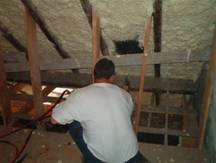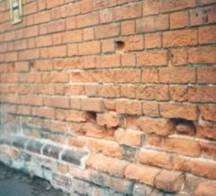If you need help and advice with regard to independent valuations, property surveys, building surveys, structural reports, engineers reports, specific defects report, structural surveys, home buyers reports or any other property matters please free phone 0800 298 5424 for a friendly chat.
Introduction
We are going to look at Spring weather and the effect that we find it has on residential properties. We will consider in our experience the problems that can arise which we have seen when carrying out surveys of properties due to weather that occurs during the Spring time such as March and April.
Synopsis
We are going to look specifically at the problems and issues we have found with the change of Rainfall during Spring that affects properties that we Survey. We are also going to speak more widely about experiences we have had with the weather in the Spring and its effect on property more generally and also going to advise you of research if any which has been in this area, i.e. Learned Institutes or Bodies such as Royal Chartered Institution of Surveyors, BRE (Building Research Establishment), we may even look at Wikipedia but we will not take it as gospel!
Construction Summary
To give you a flavour of the property that we are going to be considering, here is the construction summary.
External
| Chimneys: | Two brick chimneys |
| Main Roof: | Pitched roof with a slate roof tile covering and flat roof of mineral felt to the rear |
| Gutters and Downpipes: | Original cast iron and plastic |
| Soil and Vent Pipe: | Plastic |
| Walls: | Flemish bond bricks that have been repointed with Cement Mortar ( assumed) |
| External Joinery: | Sliding sash windows. |
| Foundations: | Not inspected and known. |
As mentioned we are going to look at the weather in Spring, we relate it back to a specific example that we have surveyed recently when someone was looking to purchase a property. This will show you just how important we think it is to have a building survey carried out. We have used the term assumed' as we have not opened up the structure.
Executive Summary
Executive summaries are always dangerous as they try and encapsulate relatively complex problems in a few precise and succinct words. Having said that here is our executive summary and recommendations:
For those short of time, just like we have in our building surveys we have an Executive Summary here which identifies the main issues with a brief explanation.
What is the background to weather in the Spring?
The weather in the Spring can vary, it changes from the season of Winter to becoming cold and fresh, or it can be hot cloudy and rainy, or it can be warm and sometimes rain, or it is warm with an occasional storm. Generally the season of Spring is known as that of growth. Wikipedia (2010). However as mentioned the Weather varies and this is because it can change very quickly, sometimes in the matter of a few hours London weather station (2010)
Spring is caused as the Earths continues its path around the Sun and the North Pole starts to move towards the Sun. As a result the Sun moves upwards in the Skies and the days continue longer. Wikipedia (2010) We then reach a midpoint when day and night become 12 hours long. This is called the vernal for Spring equinox and happens on the 21 March.
Recently the Spring has become slower in its time to arrive. England can suffer from wintery outbreaks of weather, which include snow, rain and sleet which can be near to Spring as the time of Easter which takes place in April (Met office 2010). For the effects of Snow on residential property we refer you back to our article on snow causing winter problems which is also on our website. Like Snow the Spring can affect property as severe and changing weathering can affect damage to a building.
If you require any further help on Spring please visit the following sites weather.org.uk , metcheck.com news.bbc.co.uk/weather.
One of the main problems for buildings is that Spring creates a varying weathering effect which can change quickly to cause problems such as moisture penetration, cold air entering, snow load, and freezing over building construction. Many older buildings have not been designed for the changing effect that the Spring will cause to buildings in modern times and as a result we have witnessed that more strain on properties can be caused.
Spring What does it mean to residential buildings?
One of the key implications is that the fresh cold air of Spring can enter tiny voids of entry points in the wall of a house such as airbricks and other areas of what is known as areas of cold bridging. Therefore this may be poor seals around windows doors and other openings in walls for example. The greater cold air in a property the more opportunity there is for a defect known as condensation to be created which is black mould that sticks to our walls due to the temperature of a room falling below dew point. The walls get colder due to cold bridging and create this condensation. As the walls get colder there is a greater need for insulation in a home, and many older homes are not well insulated in the walls and floors even ceilings!
Secondly, we can talk about the problem of rain and freezing causing the problem of moisture penetrating around points of the roof and walls that are vulnerable such as roof tiles Chimneys, and new kind of mortar in brickwork. In particular if you have cement pointing around bricks this suffers from moisture entering and freeze causing spalling or cracking on the face of bricks. Dampness can enter bedrooms and ceilings. Obviously, as mentioned during the Spring, it remains cold in homes on some days or times therefore more heating is required and some services such as pipes and wiring can be affected by freeze for example.
As mentioned, if rain and snow accumulates it can add to the problems of flooding that are occurring in parts of England as most forecasters are currently predicting Daily Express (2010). We have been on a variety of Surveys in which flooding has led to dampness of ground floor joists of buildings that are timber. This can lead to future decay and rot and expensive insurance claims which we have found clients to have a bad experience of. It is important to understand that snow or rain in Spring can contribute to flooding!
Defects we have seen while surveying properties
Typical problems of the buildings we Survey with Spring weathering damage
We witness roofs that are flat with water sitting on them, or with defective tiles suffering from loose nails, or concrete tiles with gaps in them, all of these types can be allowing moisture and snow enters inside through voids. Alternatively we find properties that allow rain to enter via airbricks on the ends of properties and others that have a lack of insulation which make them cold.



Lack of condensation, spalling of brickwork and effects of condensation
How to solve these problems
In our experience, the problems of Spring that do occur have never been severe enough for us to recommend that a roof tiles or walls are rebuilt! Indeed one roof and wall we looked at could use preventative measures for cure rather than repair or replacement. Certainly this is far better than the proposal to use alternative roof tiles and replacing wall construction!
The biggest problems surrounding Spring is the quick change of weather from snow, rain, wind or sleet which can create extra strain on roofs walls and coldness inside. This can lead to deterioration of bricks, roof detailing, high heating bills, dampness, and coldness inside.
Time Line - A brief history of how roofs and walls changed during successive years of Spring
| 1800s onwards | Slate tiles were used for pitched roofs, walls Flemish bond, Chimneys part of all houses. Airbricks used for ventilation in houses |
| 1950's | Concrete tiles started to be used for roofs, |
| 1960's | Flat roofs introduced for extensions. |
| 1970's | Cement mortar started to be used for walls. |
Inspection
We would carry out two different types of inspection for Spring effects on roofs and other parts of the building. Firstly, we would carry out a visual inspection both externally and internally. Secondly, we could check with a damp meter to establish the condition of the timbers inside the roof. We would use humidity metres to check for condensation. Wet rot can occur caused by the moisture of inside and entering various areas to come into contact with timbers. We can also check for moisture in joists using thermal imaging, which also allows us to examine insulation. We would also carry out a visual check of utilities.
Survey Findings
The sort of things we have found when looking at damage caused by Spring Weather is:
• Coldness entering the building through voids and causing high heating bills and condensation.
• The problem of Spring weather such as Snow and rain settling on roofs causing moisture to find entry between gaps in the roof, chimneys or it just sits on a roof causing penetration! If moisture settles on timber it can cause it to rot and eventually decay, it can also create a cold roof therefore condensation inside.
• A similar problem can occur to floor joists as in point (2) above, due to rain and snow accumulating and settling outside ground levels to a property for long periods meaning it finding its way in under floors via gaps such as those provided by air bricks, which are supposed to give ventilation to floor joists and are based on the external walls just above ground level.
Summary Upon Reflection
A few final thoughts on Spring and its effect on Property:
If you do carry out an inspection yourself do remember that the weather in Spring can make inspection very difficult and dangerous to enter voids in floors and upper areas of buildings. It is virtually impossible to tell of these kinds of matters from ground levels. You also need to look at other problems that could occur in the timber after the Spring weather goes away such as woodworm, wet rot dry rot and condensation and this will require extensive monitoring afterwards.
Independent Chartered Surveyors
If you truly do want an independent expert opinion from a chartered surveyor, and many of us are also chartered builders, with regard to valuations, mortgages, mortgage companies, surveys, building surveys, structural reports/engineers reports/specific defects report, structural surveys, home buyers reports or any other property matters please contact 0800 298 5424 for a chartered surveyor to give you a call back.
Commercial Property
If you have a commercial property, whether it is freehold or leasehold then sooner or later you may get involved with dilapidation claims. You may wish to look at our Dilapidations Website at www.DilapsHelp.com and for Disputes go to our Disputes Help site www.DisputesHelp.com
We hope you found the article of use and if you have any experiences that you feel should be added to this article that would benefit others, or you feel that some of the information that we have put is wrong then please do not hesitate to contact us (we are only human).
The contents of the website are for general information only and are not intended to be relied upon for specific or general decisions. Appropriate independent professional advice should be paid for before making such a decision.
All rights are reserved the contents of the website are not to be reproduced or transmitted in any form in whole or part without the express written permission of www.1stAssociated.co.uk
